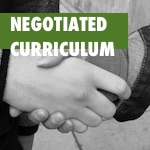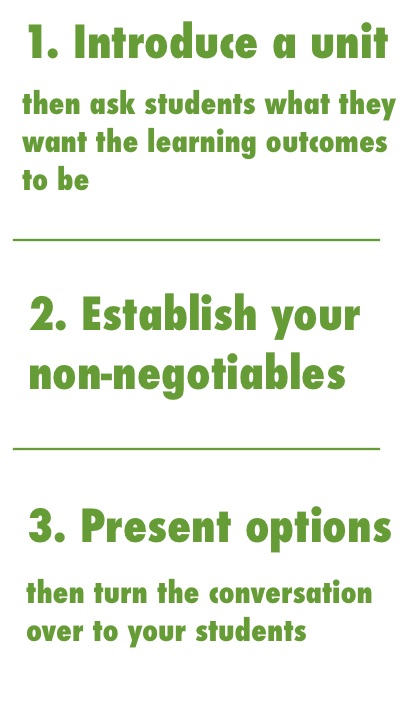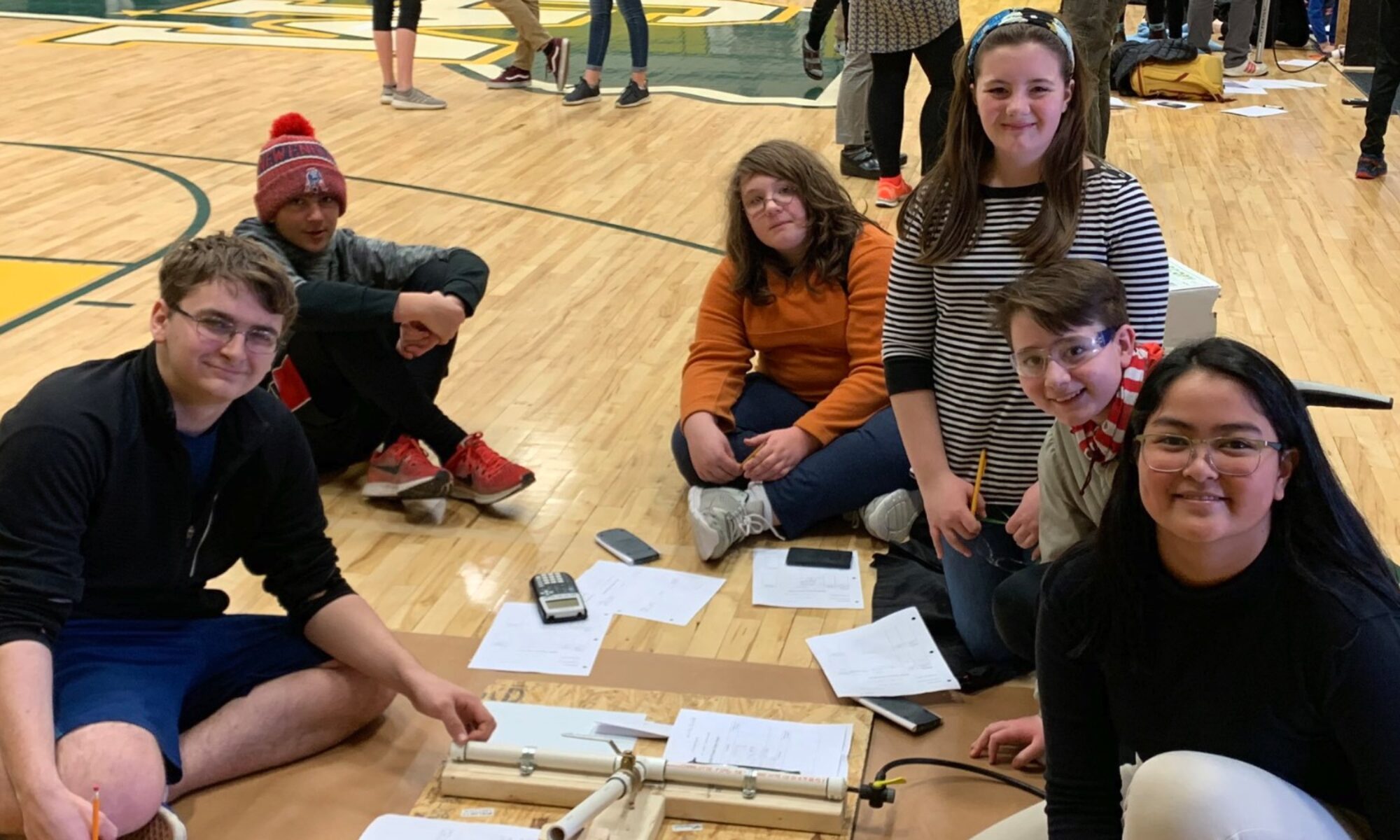Set boundaries, then let students drive the conversation
 Negotiated curriculum is the idea that you can assemble a curriculum for your class by entering into negotiations with your students: you, as the teacher, have certain non-negotiables or standards you need students to meet, and students tell you what or how they want to learn. That’s a huge concept, and impossible to wrap your head around without seeing it in action.
Negotiated curriculum is the idea that you can assemble a curriculum for your class by entering into negotiations with your students: you, as the teacher, have certain non-negotiables or standards you need students to meet, and students tell you what or how they want to learn. That’s a huge concept, and impossible to wrap your head around without seeing it in action.
Social studies educator Sam Nelson shares how he implemented negotiated curriculum in his classroom, beginning by tackling just. One. Unit.
Negotiated curriculum at the unit level
Sam Nelson (@MrNelsonTeaches), social studies educator at Shelburne Community School, in Shelburne VT, dipped his toe into the negotiated curriculum waters this year by trying the concept out over the course of just one unit.
Hear him explain, below.

A full transcript of the video appears below. This material was originally presented at Dynamic Landscapes 2016, as part of this Shelburne Community team presentation.
Mr Nelson’s Negotiated Curriculum
Another part of personalization I’ve been working with this year is I’m calling it kind of, “My Negotiated Curriculum Model”.
I’ve learned just in this past year about the negotiated curriculum model, where in essence, this can be really big. It can be having the students be a big part of the conversation, to drive what you’re learning throughout the
year, how it’s going to affect their experience as a student, what are the outcomes going to be like. I mean, this can literally start with students and affect your entire — I mean, everything under the umbrella of your curricular year can be part of a discussion with students.
And I love that, but I wasn’t ready for that this year, I’ve kind of started by, especially with my 8th graders, for example, starting with a unit.

I said,
“Okay guys, here’s our unit. Here are the topics and themes, but what more do you guys wanna learn about, what’s our learning going to look like, and what are the outcomes going to look like?”
What’s been successful is I essentially get the conversation set up, where I’ll say, “Guys, there are some non-negotiables” — if we’re doing a Protest in America unit, we look at the Vietnam War and Civil Rights. Cool.
“These are the things that I, as a teacher, have deemed to be non-negotiable, we gotta get this done. But here are some other ideas: What interests you? Let’s research what else you wanna learn about.”
Then the talking points I’ll put up there — and this is the cool part, where I will literally get everyone in a circle, get them talking, and then I’ll just step out of the circle and track their conversation, and just kind of let the students guide this discussion, where they’re even arguing, in a really great way, about, “Well, these are the things I wanna learn about.”
Student-led #negotiatedcurriculum w/ 8th grd in planning #CivilRights + #VietnamWar unit. #personalizedlearning pic.twitter.com/KrDu9sa2M2
— Samuel Nelson (he/him) (@MrNelsonTeaches) May 22, 2016
You know, I’ll even include: What are the assessments gonna look like? If we have a summative assessment, I’ll say “Okay guys, guess what? I’m choosing the learning targets, because I get to be the teacher in that sense,
so here are the standards I want to connect to, but that could look like a lot of things. These are just skills.
You could demonstrate these skills in a million ways:
- we could do a cool historical avatar journal entry
- we could take a test
- it could be an essay
- you guys could make a board game where you demonstrate this.
I mean, there’s a lot of ways we could do this.
And I just turn the conversation over to them. So it’s pretty cool for me as the year’s progressed, to have them become more and more in the driver’s seat of what our learning is going to be, what it’s going to look like, and what the outcomes are going to be.
Lessons learned from negotiated curriculum at the unit level
Moving forward, I think I’m still trying to find the right balance between, as a teacher, saying “No, I think they need guidance here, here and here”.
I guess a short anecdote would be that if they had it their way we might learn the same way every unit. Or the outcome might look the same, but I don’t wanna limit the scope of the types of things they’re going to do as students. I want them to kind of experience the whole breadth of types of writing, types of projects, and the way we learn.
Because again, throughout their experience as a student, the rest of their life, they’re going to learn things in a lot of different ways, so if I just say, “I want you to start controlling everything and picking everything,” well, they’ve only got their own kind of limited idea of successful ways to learn. So, I’m still kind of finding the right balance between putting them in the driver’s seat vs kind of guiding them to it.


One Reply to “Negotiated curriculum at the unit level”
Comments are closed.